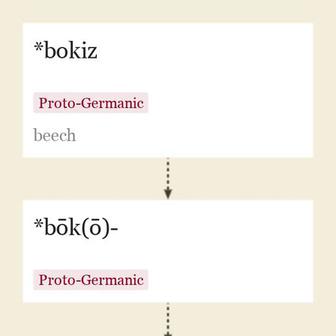bookcase n.
also book-case, "
Entries linking to bookcase

Middle English bok, from Old English boc "
Latin and Sanskrit also have words for "
The sense gradually narrowed by early Middle English to "
The use of books or written charters was introduced in Anglo-Saxon times by the ecclesiastics, as affording more permanent and satisfactory evidence of a grant or conveyance of land than the symbolical or actual delivery of possession before witnesses, which was the method then in vogue. [Century Dictionary]
From c. 1200 as "
"
The meaning "
The cases, or receptacles, for the type, which are always in pairs, and termed the 'upper' and the 'lower,' are formed of two oblong wooden frames, divided into compartments or boxes of different dimensions, the upper case containing ninety-eight and the lower fifty-four. In the upper case are placed the capital, small capital, and accented letters, also figures, signs for reference to notes &c.; in the lower case the ordinary running letter, points for punctuation, spaces for separating the words, and quadrats for filling up the short lines. [The Literary Gazette, Jan. 29, 1859]
updated on July 08, 2017